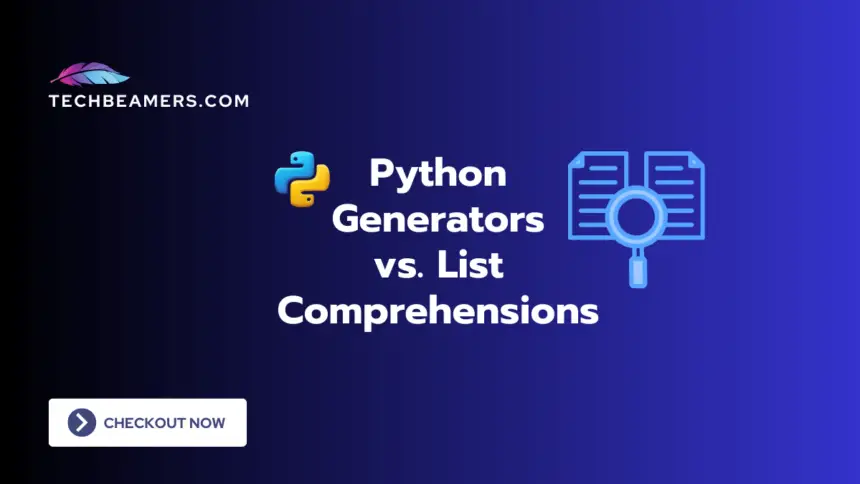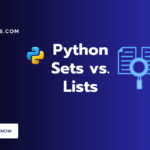This tutorial discusses and compares Python Generators vs List Comprehensions. If you’ve been coding in Python for a while, you’ve likely encountered these two powerful features. They both play crucial roles in making your code more efficient and readable. In this tutorial, we’ll explore what Generators and List Comprehensions are, how they differ, and when to use each.
Python Generators vs List Comprehensions
Let’s discover how to create lists quickly with List Comprehensions and efficiently handle large datasets using Generators.
List Comprehensions
Let’s kick things off with List Comprehensions. They provide a concise way to create lists in a single line of code. The syntax is straightforward and can greatly enhance the readability of your code.
Basic List Comprehension
Consider the following example, where we want to create a list of squares for numbers 0 to 4:
squares = [x**2 for x in range(5)]
print(squares)In this example, the expression x**2 is applied to each element x in the range from 0 to 4, and the resulting list of squares is stored in the variable squares.
Conditionals in List Comprehension
List comprehensions can also include conditionals to filter elements. Let’s create a list of even numbers from 0 to 9:
even_numbers = [x for x in range(10) if x % 2 == 0]
print(even_numbers)Here, the if x % 2 == 0 condition filters out odd numbers, leaving only the even ones in the list.
Python Generators
Generators, on the other hand, are a memory-efficient way to iterate over a sequence of items. They produce values on the fly, one at a time, rather than creating an entire list in memory. This can be incredibly useful when dealing with large datasets.
Basic Generator
Let’s create a simple generator that yields squares of numbers from 0 to 4:
def square_generator():
for x in range(5):
yield x**2
# Using the generator
squares_gen = square_generator()
for square in squares_gen:
print(square)The yield keyword is used in the function square_generator() to produce values one by one. When we iterate over the generator, it calculates the square of each number and yields it on demand.
Generator Expression
Similar to list comprehensions, generators have a compact syntax called generator expressions. The main difference is that generator expressions use parentheses () instead of square brackets [].
Let’s create a generator expression for even numbers:
even_gen = (x for x in range(10) if x % 2 == 0)
for even in even_gen:
print(even)This generator expression achieves the same result as the list comprehension for even numbers, but it does so lazily, only producing values as needed.
Differences and When to Use Each
Choose List Comprehensions for creating lists when memory is not a concern. Go for generators when handling large datasets efficiently is crucial.
Memory Efficiency
The most significant difference between generators and list comprehensions is memory usage. List comprehensions create an entire list in memory, which might not be efficient for large datasets. On the other hand, generators return values at runtime, allowing you to iterate over them without storing the entire sequence in memory.
Use Cases
- Use List Comprehensions when:
- You need to create a list and plan to use the entire list.
- Memory usage is not a concern, or the dataset is small.
- Use Generators when:
- Dealing with large datasets or an infinite sequence.
- You want to iterate over the values once without storing them in memory.
- Lazily computing values is more efficient.
Performance
In scenarios where memory usage is crucial, generators can outperform list comprehensions. Since generators deliver data on demand, they can be more efficient in terms of both time and space.
Summary – Generators vs List Comprehensions
In summary, both Python Generators and List Comprehensions are powerful tools, each with its own strengths. List comprehensions are great for creating lists in a concise and readable way, while generators shine when dealing with large datasets or situations where memory efficiency is paramount.
As you continue to develop your Python skills, understanding when to use generators or list comprehensions will enhance the performance and readability of your code.
Happy Coding,
Team TechBeamers









